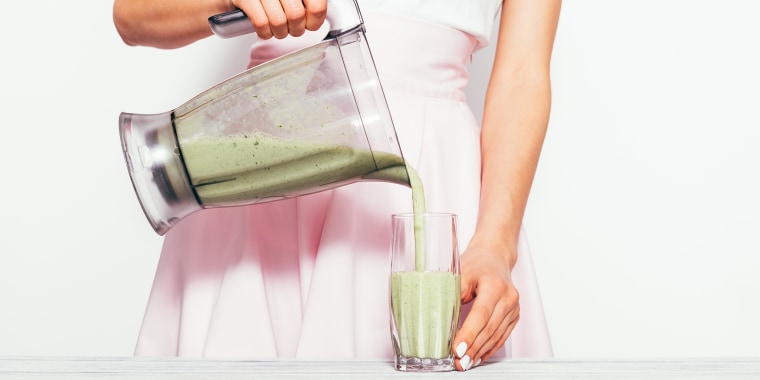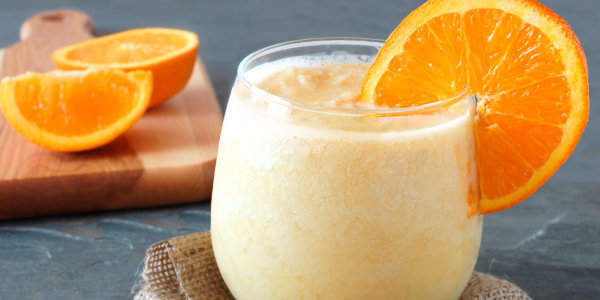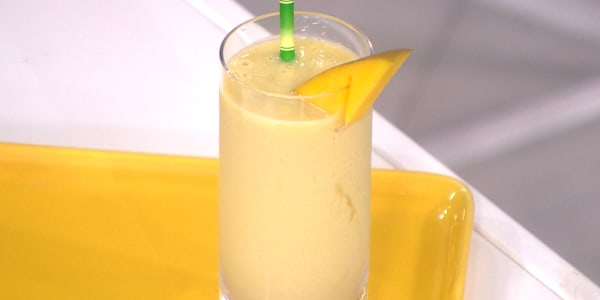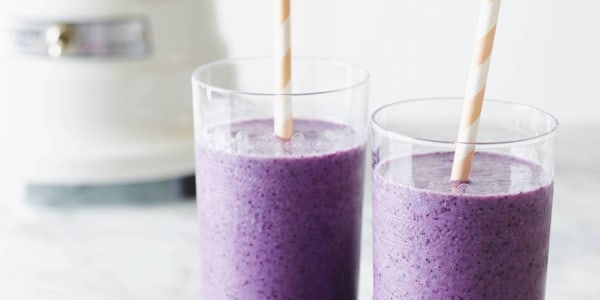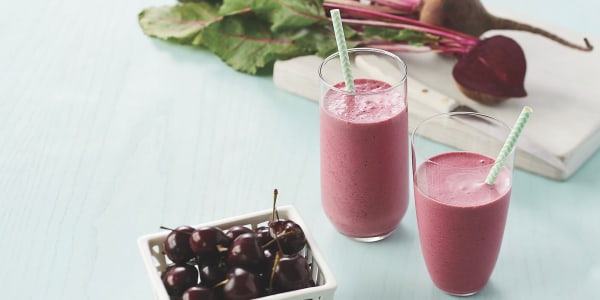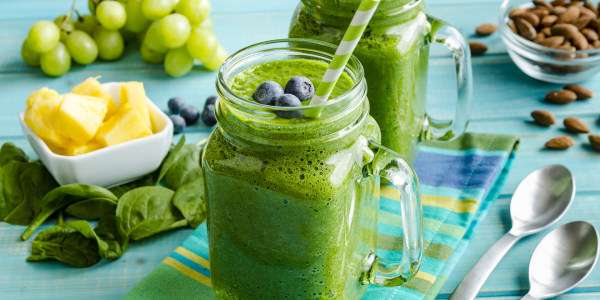If one of your goals this year is to eat more fruits and vegetables, congrats! Eating more produce daily is one of the best ways to get more fiber and disease-fighting nutrients into your diet, and it’s also fantastic for improving gut health. And one of the easiest ways to add more healthy greens and nutrient-packed fruits into your day is with a healthy smoothie. Just add the ingredients and blend!
Avoid these 4 mistakes
While making smoothies doesn’t require much culinary know-how, there are some things you need to keep in mind. Here are some common smoothie mistakes:
- Packing the blender too full. This can lead to the blade getting jammed. While it’s tempting to take the “more is better” approach and add every powder and seed you have in your cupboard, it’s smarter to keep things simple.
- Adding your dry ingredients first: Oops — this will prevent items like protein powder from getting incorporated into the smoothie properly. Always start with liquids first, like milk or plant milk, juice, water or yogurt. They help to create a vortex, which makes it easier for other ingredients to get blended in properly.
- Adding too many frozen ingredients: Frozen fruits and veggies are generally a better bargain than fresh and are excellent in smoothies. You just can’t add all of them in together, or else you might end up with a frozen clump. Try combining frozen ingredients, like cubes of mango or berries, with a fresh banana and spinach.
- Letting your blender sit before cleaning it. You will regret this one! Unfortunately, smoothies have a way of coating the interior of your blender really well, and then adhering to it as the contents dry. Instead of letting it sit once you pour out your smoothie, fill it ¾ of the way with warm water, add a couple drops of liquid dish soap and blend! The stuck-on smoothie will release, and you can just give it a rinse and let it air dry.
Functional Smoothies
Now that you’ve mastered the dos and don’ts of smoothie making, you can get blending! One reason why smoothies have become such a staple in healthy diets is that you can address specific nutrition concerns in a quick, no-cook way. While you can turn nearly anything into a smoothie, there are specific ingredients that will help you target certain concerns.
Immunity
With COVID-19 still rearing its ugly head and cold and flu season in full force, immunity is top of mind for many of us. Vitamin C is essential for having a healthy immune system, as well as for healing wounds and cuts. The good news is that virtually every fruit and veggie contains some vitamin C. The smoothie superstars with tons of vitamin C include strawberries, citrus fruits, guava, kiwi, papaya and kale. Get nearly all the vitamin C you need for the day with this delicious Double Orange Smoothie.
Another nutrient that plays a critical role in immunity is beta-carotene. It’s smart to get at least two sources of beta-carotene daily for optimal immune health. Orange and dark green foods are generally packed with this nutrient and include mango, pumpkin, carrots, spinach, sweet potatoes, cantaloupe and apricots. Get that beta-carotene boost with this flavorful Mango Ginger-Cashew Smoothie.
One immune support nutrient that you may not be aware of is the mineral zinc, which is essential for keeping that immune system intact and also for healing. You’ll find zinc in beef, chicken and seafood, but those probably aren’t what you want to throw into your blender. Smoothie-friendly sources of this mineral include milk, pumpkin seeds, kale, cashews, pecans, almonds and peanuts. Whole grain oats and chia seeds are also smart for upping your zinc intake and work well in smoothies. Get more zinc in your day with this Banana Blueberry Smoothie, which blends almond milk with fruit and three different seeds.
Strong Muscles
If getting stronger is on your list of goals this year, smoothies are your friend. For people who struggle to get enough protein each day, a smoothie can help fill in the gaps. Protein-rich add-ins include nuts, seeds, yogurt and protein powder. You can get those gains with this Workout Recovery Smoothie, which boasts 25g of muscle-building protein per glass.
Gut Health
Fiber is such an awesome and essential part of our diet, but most of us aren’t getting enough. It can be tough to meet the United States Department of Agriculture’s Dietary Guidelines’ goal of 25 to 38g of fiber per day. In fact, most of us are only getting 16g on average. Not only does fiber help us feel full and satisfied--which may lead to losing weight--it’s also critical for gut health. Fiber-rich smoothie additions include rolled oats, avocado, blueberries, raspberries and blackberries, apples, nuts and dried fruits. This Energizing Kale Smoothie packs in three high fiber foods — kale, blueberries and creamy avocado.
Now that you’ve mastered Smoothie 101, you’re armed with everything you need to know to make healthy, energizing and delicious smoothies.
Related:
